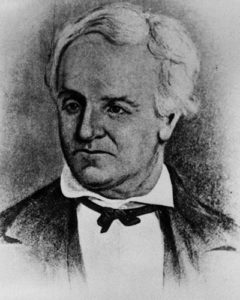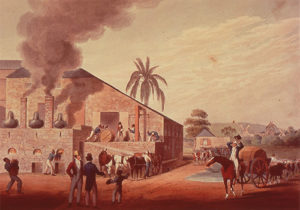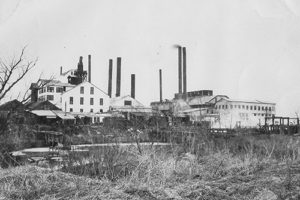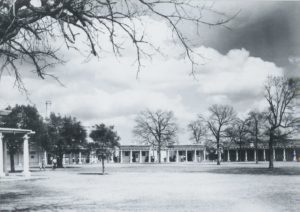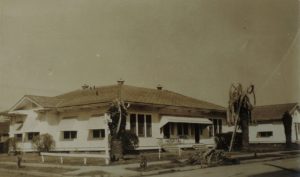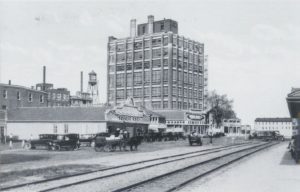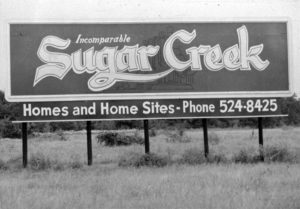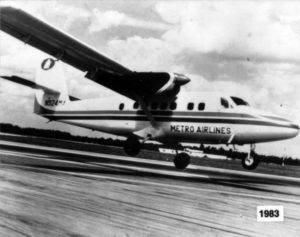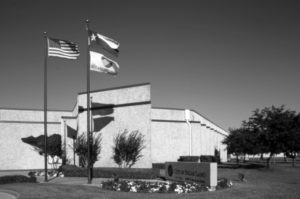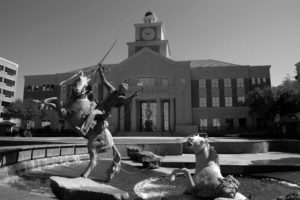The Sugar Land Heritage Foundation has prepared the following timeline and will continue to update it as more historical information becomes available.
Author: Bettye Anhaiser, Member of SLHF Board of Directors
Sugar Land is on Oyster Creek and U.S. Highway 90A, east of the Brazos River and seven miles northeast of Richmond in Northeastern Fort Bend County. The area was originally granted to Samuel M. Williams in 1828 for his service as secretary to Stephen F. Austin. Samuel started growing sugar cane here.
Nathaniel F. Williams purchased the land from his brother in 1838, and there he and a third brother, Matthew R. Williams, operated Oakland Plantation, which grew cotton, corn, and sugarcane.
In 1853 Oakland Plantation was purchased by Benjamin F. Terry and William J. Kyle, who were instrumental in extending the Buffalo Bayou, Brazos and Colorado Railway through the property.
A post office was established in Sugar Land in 1858. After the deaths of Terry in 1861 and Kyle in 1864, the plantation began to languish. The post office was closed in 1886.
E. H. Cunningham of San Antonio accumulated more than 12,000 acres of the property over time and invested more than $1 million in a sugar refinery, a new raw-sugar mill, a paper mill, and the fourteen-mile Sugar Land Railroad in the 1890s. Sugar Land was one of the rail stations. In 1890 a second post office opened. At that time much of the labor force was leased from the nearby state prison farms. The inmates worked in the wet sugarcane fields, many falling victim to the periodic epidemics of fevers. The brutal working conditions caused bitter convicts to call Sugar Land the “Hell hole on the Brazos.”
In 1892 the town had one physician and a population of 500.
From 1906 to 1908 Isaac H. Kempner of Galveston and William T. Eldridge of Eagle Lake acquired the Ellis and Cunningham plantations and the Cunningham Sugar Company, modernized the facilities, and made the community a company town for the Imperial Sugar Company, the Sugarland Industries, and Sugar Land Railroad (Missouri Pacific).
In 1913 the sugar company built 8 miles of levee, along with twenty miles of drainage ditches, to keep the Brazos River from flooding Sugar Land.
By 1914 the population had dropped to 200, but the number of businesses had increased to include a paper manufacturer and a bank.
Between 1917 and 1928, dredging of the many shallow pools, lakes, creeks, and Oyster Creek reclaimed acreage to provide necessary drainage and more farmland.
In 1925 the population was listed at 1,000; four years later that figure had expanded to 2,500. It was also the year the iconic Char House was constructed.
With the Great Depression the town lost residents, and in 1936 population was registered at 1,500, where it remained through the 1940s. The refinery and town did their best to keep everyone employed during this difficult time.
In 1946 the Kempner family became sole owners of the town.
By 1956 some 2,285 people called Sugar Land home.
By 1964 the population had increased to 3,100.
Spurred by development from nearby Houston, the population had climbed in 1988 to 14,898, and businesses numbered 423.
In 1989 the population was 19,874. In 1990 it was 24,529.
The population was 63,328 in 2000.
